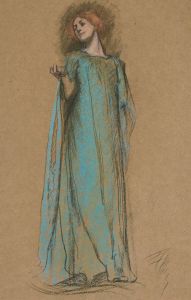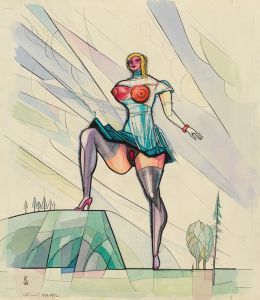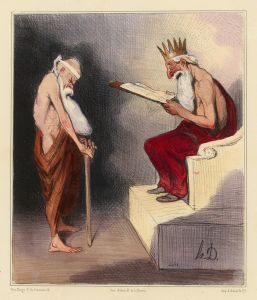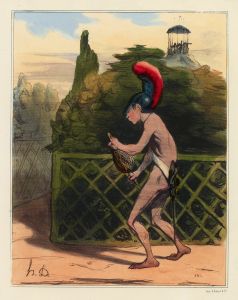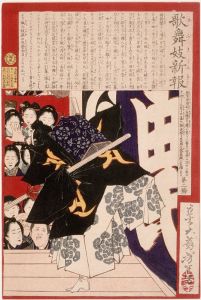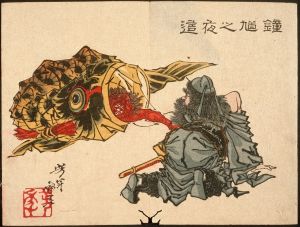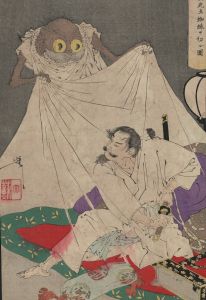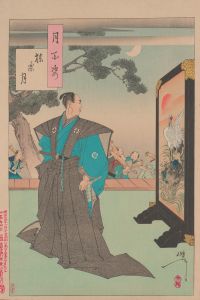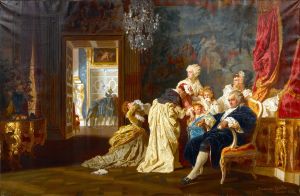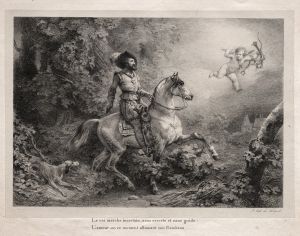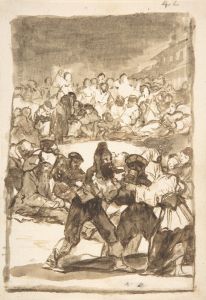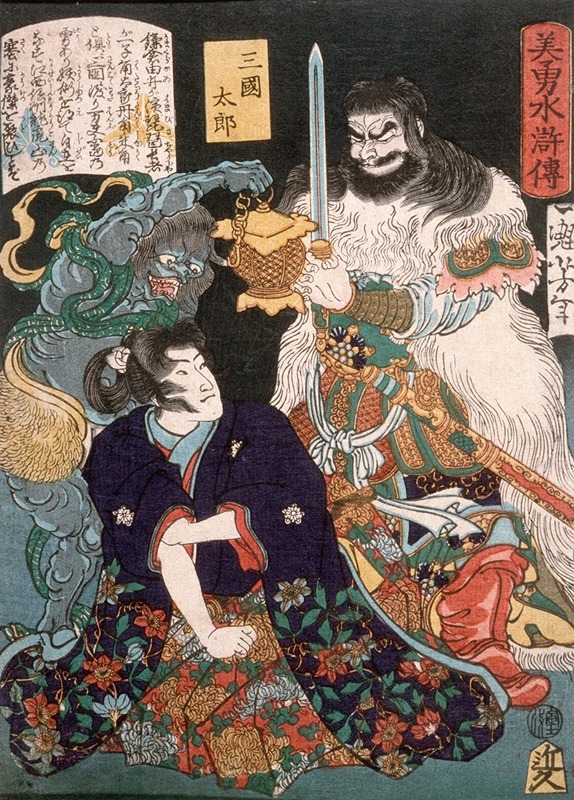
Sangoku Tarō Kneeling before Demon and Warrior
A hand-painted replica of Tsukioka Yoshitoshi’s masterpiece Sangoku Tarō Kneeling before Demon and Warrior, meticulously crafted by professional artists to capture the true essence of the original. Each piece is created with museum-quality canvas and rare mineral pigments, carefully painted by experienced artists with delicate brushstrokes and rich, layered colors to perfectly recreate the texture of the original artwork. Unlike machine-printed reproductions, this hand-painted version brings the painting to life, infused with the artist’s emotions and skill in every stroke. Whether for personal collection or home decoration, it instantly elevates the artistic atmosphere of any space.
Tsukioka Yoshitoshi (1839–1892) was a renowned Japanese ukiyo-e artist, known for his innovative approach to traditional woodblock printing and his vivid depictions of historical and supernatural themes. Among his many works, "Sangoku Tarō Kneeling before Demon and Warrior" stands out as a compelling example of his ability to blend narrative, emotion, and intricate design.
"Sangoku Tarō Kneeling before Demon and Warrior" is part of Yoshitoshi's exploration of legendary and historical figures, a common theme in his oeuvre. The print captures a dramatic moment involving Sangoku Tarō, a character whose stories are rooted in Japanese folklore and history. In this artwork, Sangoku Tarō is depicted in a moment of submission or supplication, kneeling before a demon and a warrior. This composition is typical of Yoshitoshi's style, which often juxtaposes human figures with supernatural elements to create tension and intrigue.
The demon in the artwork is rendered with meticulous detail, showcasing Yoshitoshi's skill in portraying mythical creatures with a sense of realism and menace. The warrior, on the other hand, is depicted with a sense of authority and strength, possibly representing a figure of power or protection. The interaction between these characters invites viewers to ponder the narrative context, a hallmark of Yoshitoshi's storytelling prowess.
Yoshitoshi's work is characterized by his use of bold lines and vibrant colors, which are evident in this print. The composition is dynamic, with a strong sense of movement and emotion conveyed through the postures and expressions of the figures. The use of color is particularly noteworthy, as it enhances the dramatic impact of the scene and highlights the contrast between the human and supernatural elements.
The historical context of Yoshitoshi's work is significant. He was active during the late Edo and early Meiji periods, a time of great social and political change in Japan. This era saw the decline of the traditional ukiyo-e art form, as Western influences began to permeate Japanese culture. Despite these challenges, Yoshitoshi remained committed to his craft, and his work is often seen as a bridge between traditional and modern Japanese art.
"Sangoku Tarō Kneeling before Demon and Warrior" reflects Yoshitoshi's deep understanding of both the technical and thematic aspects of ukiyo-e. His ability to convey complex narratives through visual art has earned him a lasting legacy, and his prints continue to be celebrated for their artistic and historical significance.
Today, Yoshitoshi's works are highly regarded by collectors and scholars alike. They offer valuable insights into the cultural and artistic landscape of 19th-century Japan, as well as the enduring appeal of myth and legend in art. "Sangoku Tarō Kneeling before Demon and Warrior" is a testament to Yoshitoshi's mastery of the ukiyo-e tradition and his unique ability to capture the imagination of his audience.





